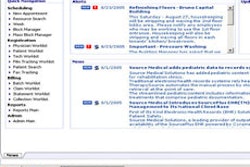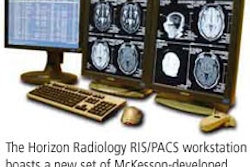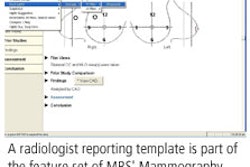SAN DIEGO - The adoption of the electronic medical record (EMR) is no longer an "if" proposition for many U.S. healthcare institutions -- it has become a "when and how" situation. The cost of implementing an EMR is not an inconsequential for a facility; the price tag can range from millions to tens of millions of dollars depending on the size and scope of the project.
Funding for these initiatives is unlikely to come from local, state, or federal government agencies, leaving hospitals to pick up the cost. This capital expense arrives at a time when, according to the American Medical Association, physician costs are up 15% and Medicare payments are down 26% -- and scheduled to be reduced even further over the coming years.
Although the landscape for EMR deployment looks bleak, there are healthcare information technology (HIT) strategies that facilities can adopt to cushion the fiscal blow from the roll out of the technology, according to Dr. David Delaney.
Delaney, the chief medical officer and vice president of business development for Boston-based charge-capture software developer MedAptus, offered his thoughts on self-funding an EMR to attendees of the Healthcare Information and Management Systems Society (HIMSS) conference on Tuesday.
"The EMR has the potential to do tremendous good," he said. "But like every other technology, it has limitations and those limitations are largely driven by how it is implemented and the quality of the software and product itself."
At its most fundamental level, an EMR turns scribbles into data and allows for the mapping and reworking of complex workflows, Delaney said.
"Most institutions considering the adoption of an EMR are savvy enough to be aware that they don't want to pave over bad processes with good technology," he said.
Delaney advocates that a facility not buy into inflated expectations about EMR, but rather that it prudently and deliberately chart a course for EMR adoption and implementation solely on the basis of its HIT capabilities and needs. First, the facility needs to inventory and assess its existing HIT assets. These can range from billing and collections applications, to scheduling software, clinical informatics programs such as RIS/PACS, and decision-support tools such as computerized physician order entry (CPOE) products.
Once HIT assets have been inventoried, the institution should focus on maximizing its current HIT investment, Delaney said. This can range from updating mature systems to retooling workflow, or adopting more aggressive financial applications to shorten cash-flow cycles.
After a facility's current HIT systems have been streamlined and optimized, Delaney suggested using a best-of-breed approach for selecting evolving EMR components. This strategy provides a flexibility that may be unavailable if a hospital ties itself to a single vendor and its application suite. Most integrated suites, he noted, are largely a thin veneer of interface over cobbled-together systems.
"Almost all vendor suites were built by acquisition," Delaney said. "Those acquisitions were not necessarily based on what was 'Mr. Right' at the time, but rather on 'Mr. Who Is Available Right Now.'"
A stepped rollout of necessary administrative and clinical components for the EMR should proceed on a return-on-investment (ROI) level, with ROI-positive applications implemented first, then the ROI-neutral, and lastly the ROI-negative ones. Delaney said that an EMR adopter should expect about a seven-year breakeven cycle on its investment, but that even this estimate is formed on the basis of projection and speculation.
"An EMR is a multiyear, multimillion dollar transformation with an unclear financial return to the purchaser," he said. "It's a marathon, not a sprint to put an EMR in place. As such, it's requisite to carefully consider the financial impact."
By Jonathan S. Batchelor
AuntMinnie.com staff writer
February 15, 2006
Related Reading
Integrating disparate systems key to EHR deployment, February 14, 2006
Standards, interoperability drive cardiac PACS, IS implementation, February 13, 2006
Cost-cutting drives European SR adoption, January 20, 2006
Sun Microsystems to join national EHR initiative, November 29, 2005
Diagnostic imaging and clinical information systems: An integration primer, April 14, 2005
Copyright © 2006 AuntMinnie.com



















